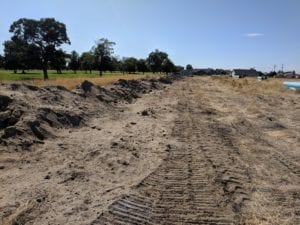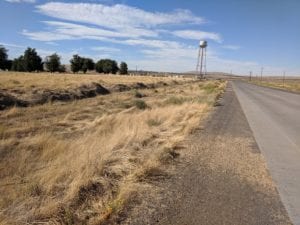
 Background:
Background:The City of Umatilla, Oregon retained J-U-B to assist with permitting, planning, design, and construction services of their industrial wastewater (IWW) reuse pipeline which conveys data center non-contact cooling wastewater to a nearby irrigation canal for agricultural reuse.
 Project Need:
Project Need:The rapid development of data centers (water-intensive industry) in the City of Umatilla posed concerns regarding the management of projected wastewater flows and limited wastewater treatment system capacity. Data centers, using evaporative cooling to control computer equipment heat output, require large amounts of water. Cooling water not evaporate is discharged as industrial wastewater when dissolved solids become excessive. Prior to this reuse project, cooling tower IWW was discharged to the City’s WWTP resulting in a 65% increase in wastewater flow when ambient temperatures increase above 80 degrees. The non-contact cooling tower IWW is relatively clean and requires no treatment prior to being discharged with sufficient mixing water in the canal to dilute the increased dissolved solids concentration in the IWW. Since 2013, two more data centers have been built and at least two more are planned in the near future.
 Improvements:
Improvements:To mitigate the negative impacts the cooling tower IWW had on the City’s wastewater treatment plant, J-U-B proposed an industrial wastewater reuse pipeline to direct non-contact cooling tower IWW to the BOR Phase 1 Exchange Canal, which eventually connects into the West Extension Irrigation District (WEID) canal. The pipeline consists of an 18-inch PVC pipe with a length of approximately 12,000 linear feet and a diversion structure where water is sampled prior to discharge. The wastewater is conveyed through the new pipeline and discharged into the irrigation canal for agricultural reuse. J-U-B assisted the City in securing a NPDES permit for the new discharge. A second industrial wastewater reuse line has been installed connecting a second data center to the diversion structure. This project alleviated capacity concerns within the system preventing a large wastewater treatment plant upgrade, while also providing an economical way to dispose of non-contact cooling tower water.
© 2024 J-U-B Engineers, Inc. All Rights Reserved. Privacy | Electronic Documents/Data License